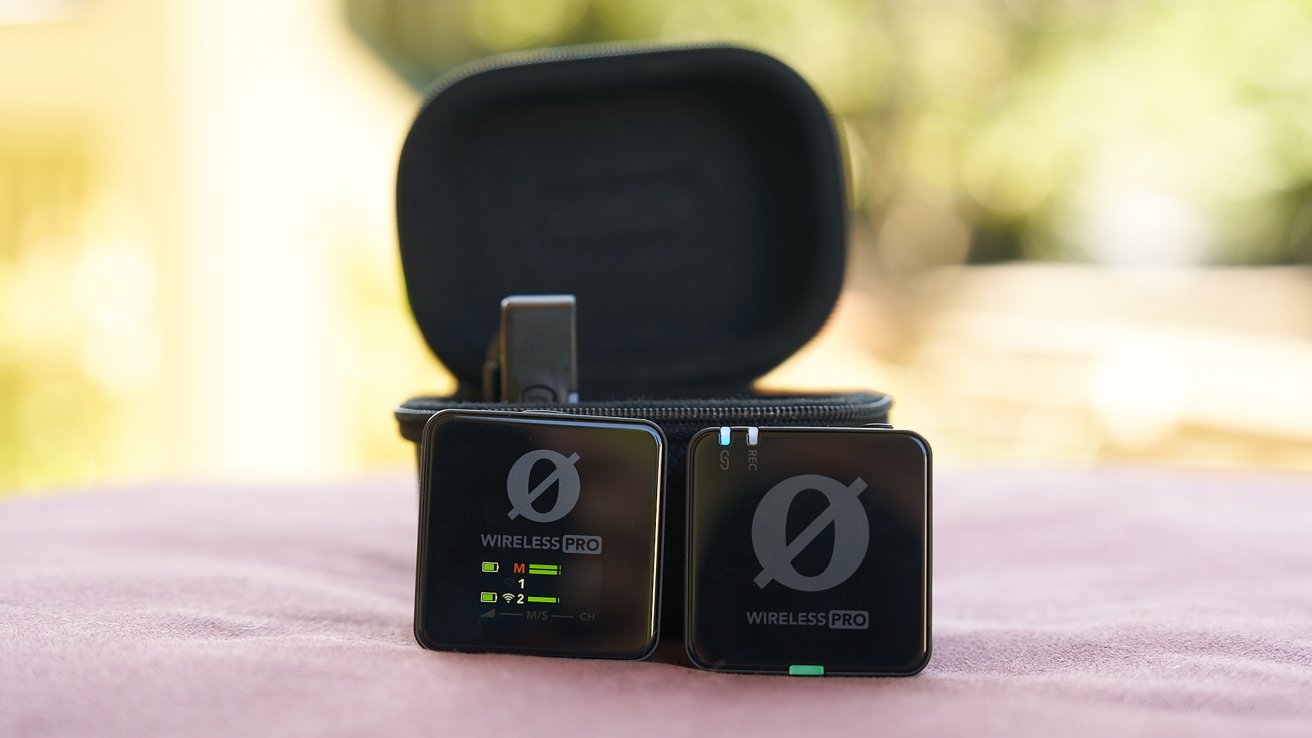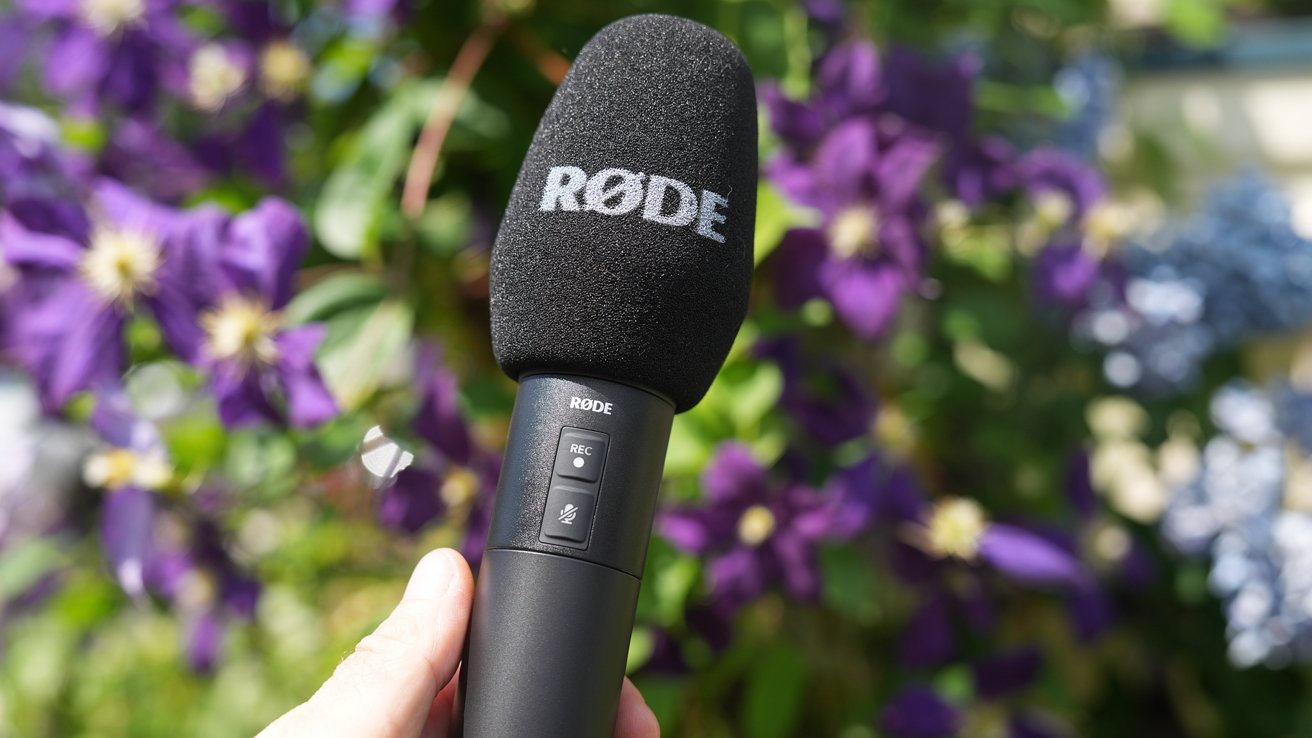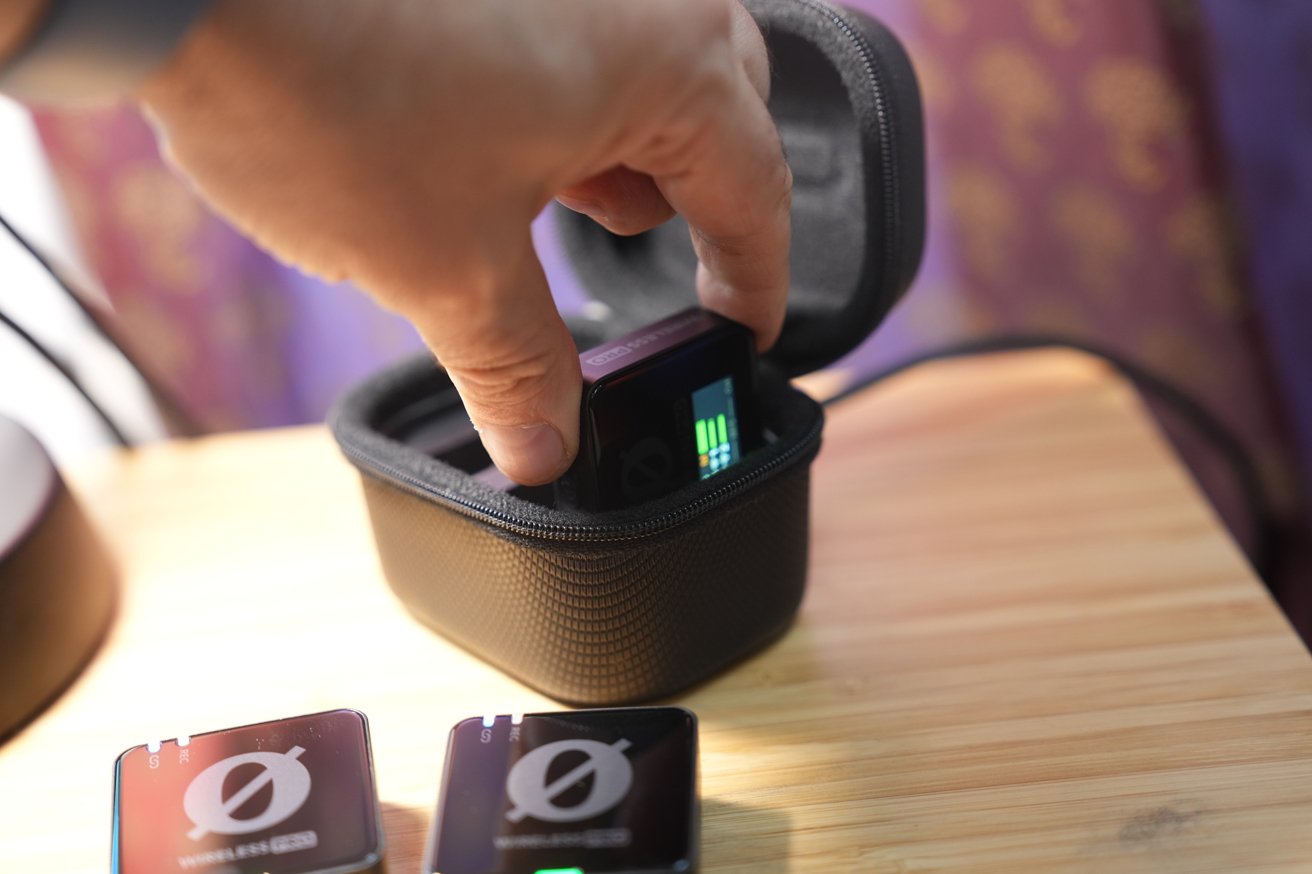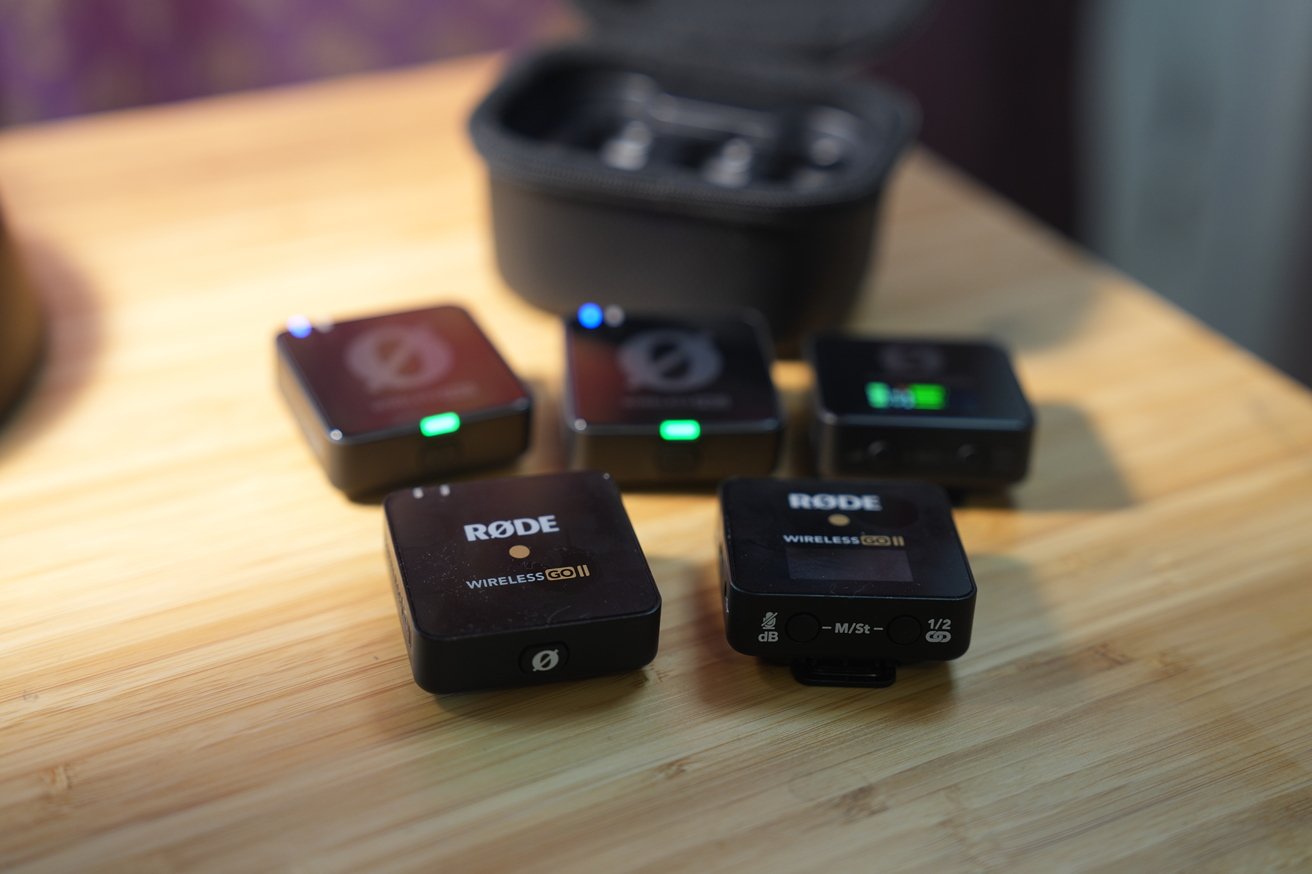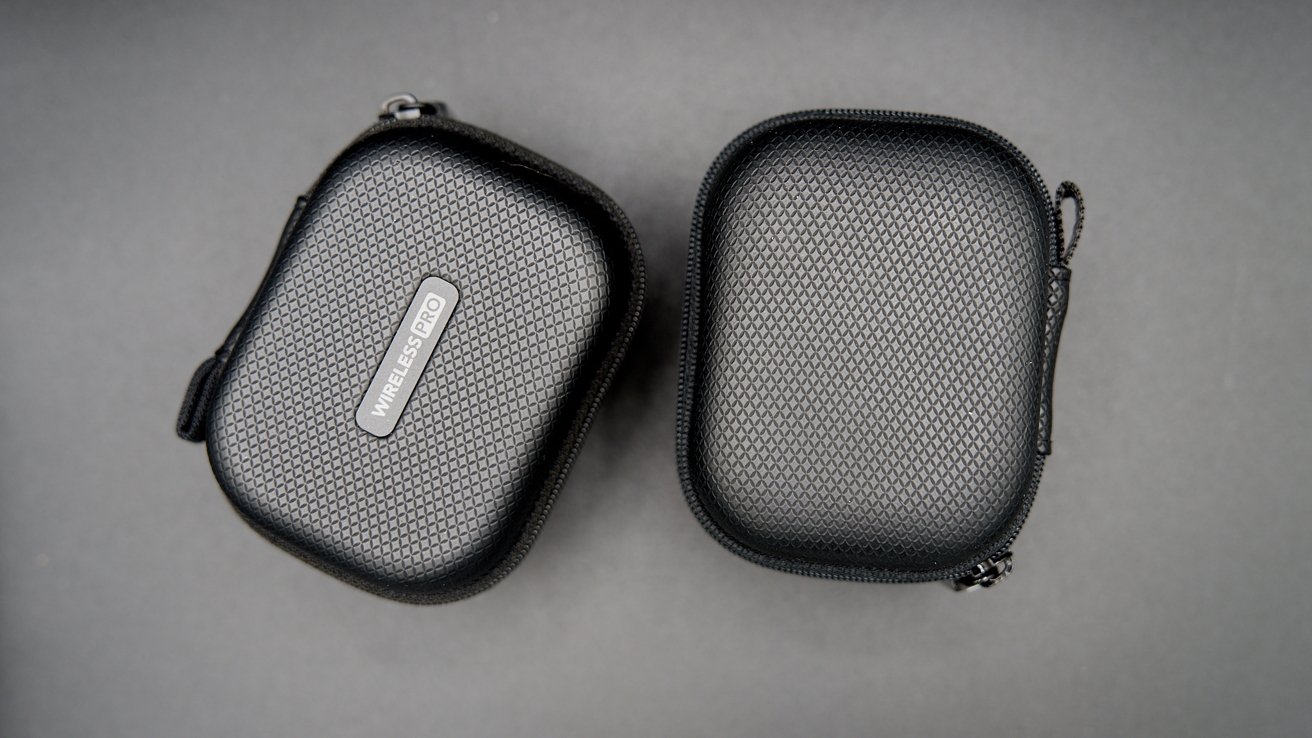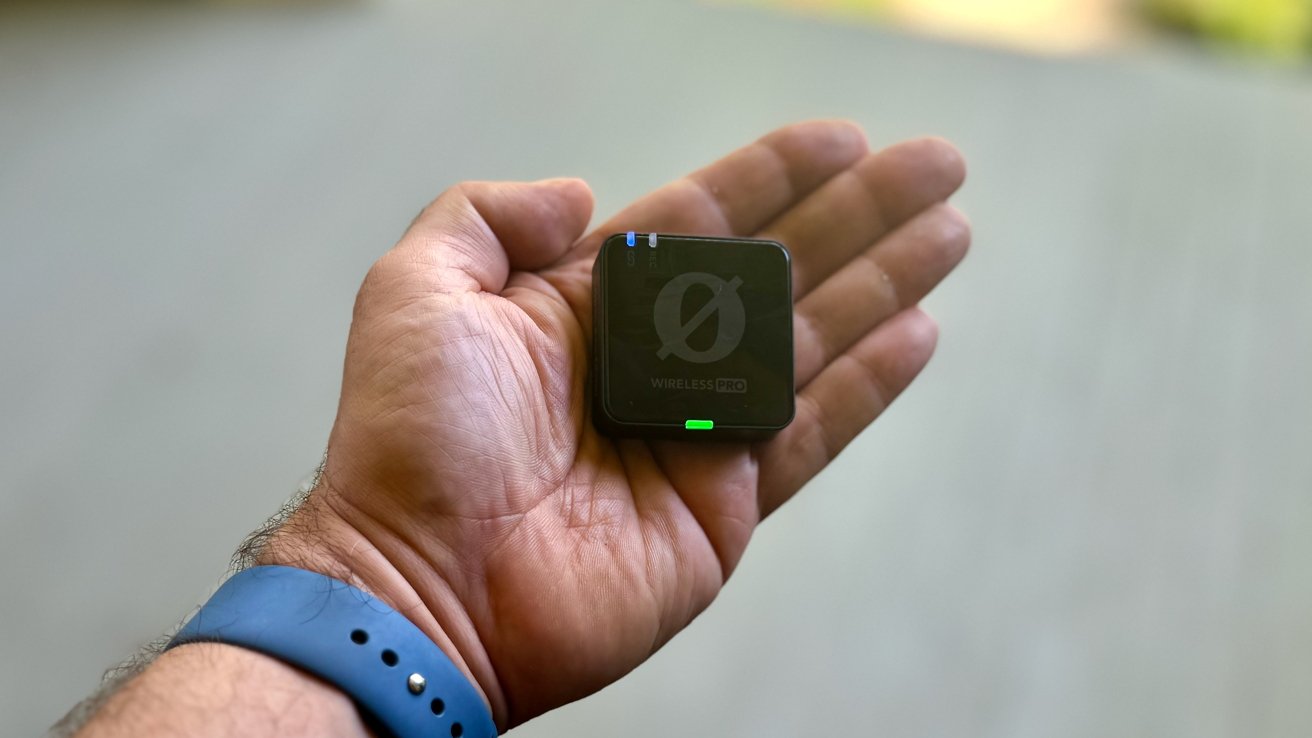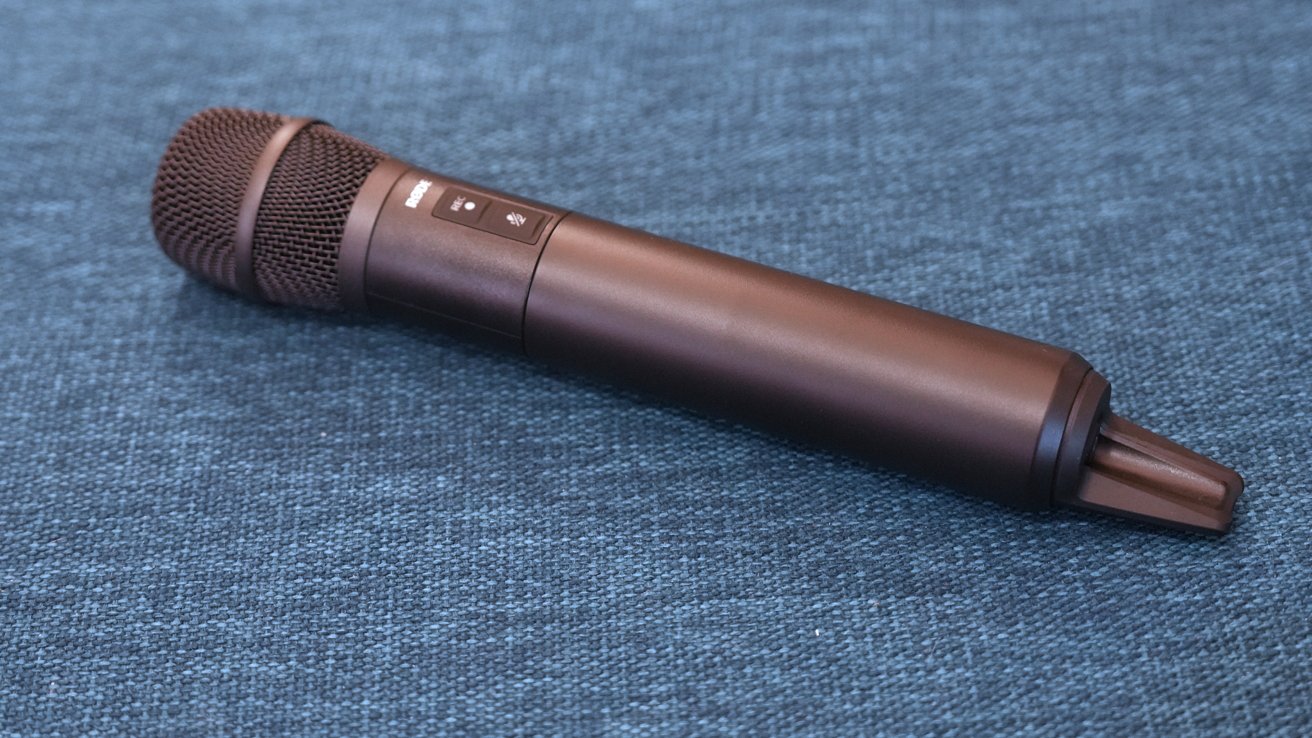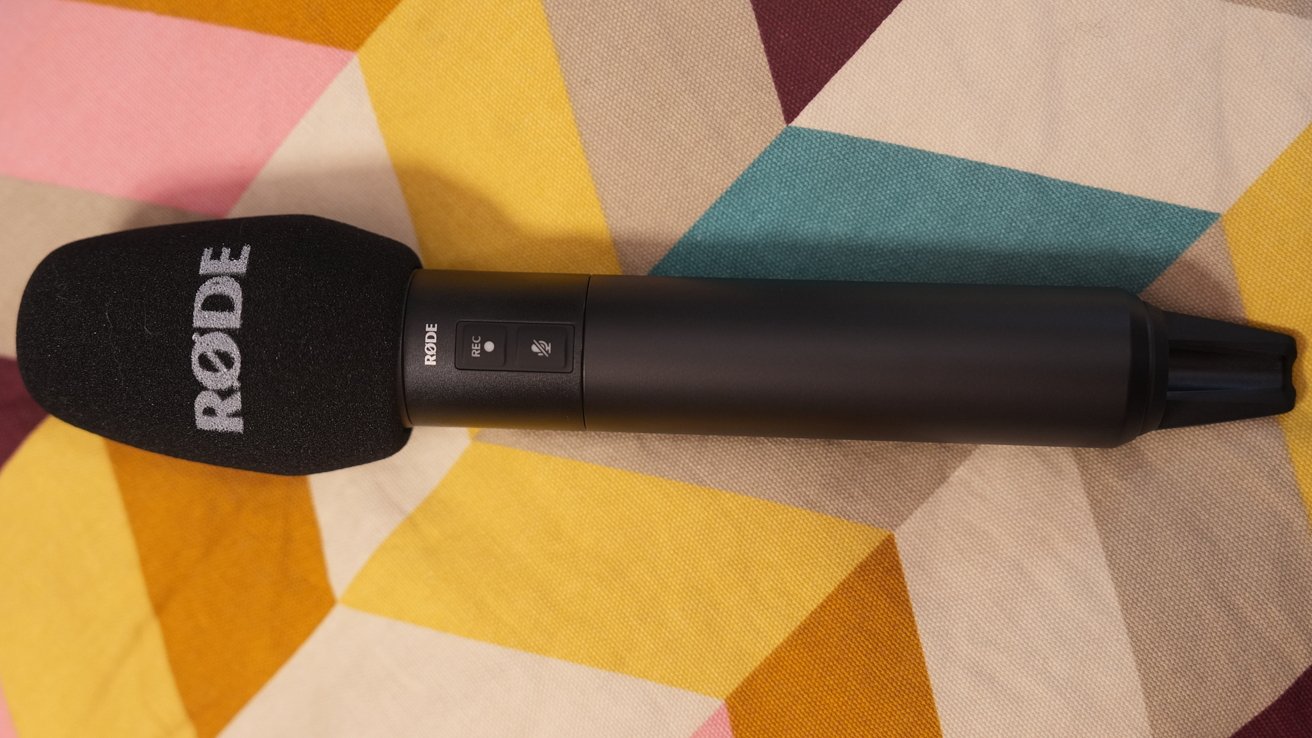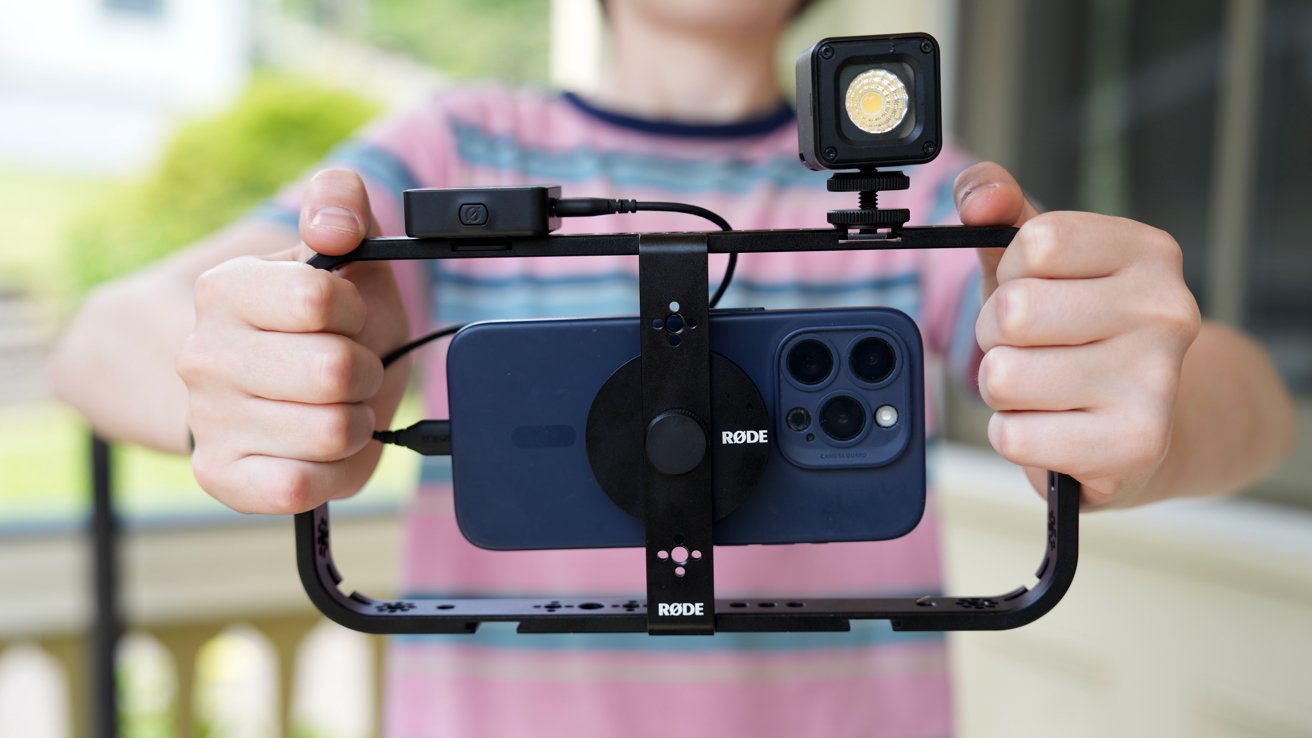
Rode’s wireless microphone systems have been the choice of creators for years. The new Rode Wireless Pro system has enhanced features, and radically improves sound quality, connectivity, and user experience.
The Wireless Go II and the original Wireless Go mic and receiver systems are some of the most popular tools with YouTubers and High-end creators a like. The Wireless Go lineup has inspired dozens of copycat products, all of which promise the best sound and best performance.
The Rode Wireless Pro is a massive upgrade over the Go II. As the name implies, it brings many pro-level features to its compact, affordable package. It works with numerous Rode wireless mics and offers better-quality sound and more features than either Rode’s or competitors’ products.
I tested the Rode Wireless Pro and the Interview Pro stick mic together. The Wireless Pro is a command unit for any of Rode’s Series IV mics, which includes the Interview Pro.
I paired these with the Rode Phone Cage, a frame with a magnetic adapter that wraps around a smartphone for a cinema-camera-style grip. The cage is also designed to mount accessories like video lights and the Wireless Pro receiver unit.
The result is a stable platform for creators shooting with smartphones, but the Wireless Pro is just as comfortable in a camera’s hot shoe.
The two transmitters have internal storage and can transmit audio to the receiver. The Wireless Go II that I use also stores audio in the transmitters, and it’s saved many shoots where I forgot to turn on the receiver or had the camera’s audio recording set improperly.
The Wireless Pro system has many excellent features, but the standout is the ability to record 32-bit floating-point audio. I’ll explain the benefits of this, but the TLDR is that it’s the highest-quality audio available in a wireless mic.
The Rode Wireless Pro setup includes a receiver unit and two transmitters. Each is a small rectangle about the size of an AirPod case. The transmitters can record from built-in microphones or lavalier mics with the built-in mic jack.
Very few people use the built-in mics. Lavalere (lav) mics are tiny microphones often clipped to clothing. If you’ve ever noticed a small mic attached to someone’s lapel on TV, you’ve seen a lav.
The only reason I’ve ever used the built-in mics with my Go II is when I forget to bring my lav mics.
The quality of a microphone is the biggest factor in audio quality. The lavs with the Wireless Pro are excellent, and the system accepts any mic with a standard mic jack connector.
Since any mic will connect to the Wireless Pro transmitters, creators with higher-quality lav mics can use those instead. Very few users will need to upgrade with such good lav mics provided.
The system has a headphone jack on the receiver so camera operators can monitor the audio and make necessary adjustments. The same port can be used to add a microphone. This allows scene narration or allows the operator to add spoken notes about post-production steps.
The Rode Wireless Pro receiver has both microphone and USB-C outputs. The microphone out port connects to standard mic jacks, while the USB-C connection allows any iPhone or iPad to be used for audio recording. The USB-C connector also transfers audio files from the transmitter’s internal storage to a Mac or Windows machine.
Rode Wireless Pro review – Form and function
Rode’s wireless systems have always been surprisingly small and light, especially considering the audio quality they capture. The Wireless Pro system is slightly bigger in all dimensions than the Wireless Go II. The transmitters are small enough to slip into a pocket without noticing the size or heft.
The system comes in a zipper case with charging slots for each component and a USB-C port to charge all devices simultaneously. The case is relatively bulky, just a bit smaller than a HomePod.
The case is one of my favorite things about the system, as it can charge all three devices simultaneously. Each component had to be recharged individually with the older systems, so the case is welcome even if it adds bulk.
Despite its size, someone already packing a camera, lenses, tripod, and accessories will not be bothered by it.
The system comes with a second zippered pouch for the included accessories, which have a lot of accessories. The system has microphones and magnetic clips to connect the transmitters to metal surfaces. The kit comes with everything needed for audio recording.
As I’ll explain below, the Wireless Pro system works with other Rode microphones. It can be used with the included two transmitter modules and devices like stick mics and other Rode wireless products.
The receiver unit has audio level bars that indicate which mics are transmitting to the receiver.
Rode Wireless Pro review – 32-bit floating point audio
The Wireless Pro’s most important feature isn’t the design of the mics or the case. The Wireless Pro records audio in what’s called 32-bit float audio.
Often just called 32-bit float, this recording format could be an article, but the idea behind the benefit of 32-bit floating-point audio is fairly simple.
Imagine trying to draw a realistic sunset over a green field using crayons. Using the eight-color box will make your artwork look almost nothing like the real world. The sunset will only be yellow or orange, and the grass will be one or two shades of green.
Switch to the 128-color box of crayons, and you can make a much more realistic piece of art. The grass can have a range of shades, and the sky around the sun can have a smooth gradient of blues to reds.
As with colors, audio has a complex range as well. Recording 32-bit floating-point audio is more than using a 128-color box of crayons— it’s the audio equivalent of a crayon box with thousands of colors.
32-bit audio recording is performed with two different converters, one of which captures soft sounds and the other of which captures loud sounds.
Most audio recorders at this level capture only a middle range of tones. They can’t record the loudest or the softest audio, so whispers are inaudible, and louder sounds tend to “clip,” which is the term for audio that is so loud it distorts.
32-bit float recorders can capture a range of audio levels far greater than the human ear can hear, so quiet sounds aren’t lost, and loud sounds won’t clip.
As someone who records studio and field recordings for a YouTube channel, I have to set and test my audio every time I sit down to record to ensure it won’t clip. I have to adjust my audio so that it can be heard clearly when recording outside.
32-bit float eliminates nearly all of the guesswork with audio recording. If your mic gain is set too high or too low, 32-bit float allows you to fix it in postproduction without worrying about distorted audio.
The system has several other audio features, including GainAssist. GainAssist allows the system to vary the amplification of sounds to match the audio levels in production.
Rode Wireless Pro review – Timecode
The Rode Wireless Pro can recode timecode, usually found in high-end audio systems. Timecode seamlessly syncs footage from timecode-capable cameras with timecode-based recordings from an audio recorder.
The result is audio that perfectly syncs with the footage from one or more timecode-aware cameras. It is impressive that a sound recording system with a 32-bit float and a timecode can be had for under $400.
Rode Wireless Pro review – Wireless Transmission
The Rode Wireless Go launched high-quality wireless transmission protocols for sound transmission from the transmitter to the receiver. A system with poor wireless transmission is nearly useless. If you can’t record audio without distorting it, it doesn’t matter how good the mic or the transmitter is.
The Wireless Pro uses the company’s proprietary Series IV transmission and claims to have nearly zero latency. Latency is the delay between audio and the moment it’s recorded and is the biggest cause of audio tracks not syncing with video.
The wireless transmission is encrypted, so it’s impossible to eavesdrop on its wireless signals. Rode says their audio is stable up to 260 meters, around 800 feet. While I didn’t test the mic at those long distances, I did test it more than 100 feet away, and the audio recording was perfect.
In my system testing, the audio quality was pristine, and performance was on par with the company’s promises. While I am not an audio engineer, I do have to adjust the audio for the videos I create, and even with my high-end studio mic, this isn’t always possible because my camera only records 24-bit audio.
The Rode system can record audio at a higher quality than my $500 microphone and $4000 camera combined. I’ll likely use this system for a second audio stream to ensure I get the best sound possible.
I also tested the Rode Interview Pro on wireless transmission, which works with the Rode Wireless Pro thanks to its use of the same Series IV transmission system. Setting up this stick mic to work with the wireless receiver took just a few button presses. The Wireless Go II also has Series IV capabilities, so users of the older systems can use this mic, too.
As I expected, the audio quality is superb. The audio files have so much range that editing is radically simplified compared to the Wireless Go II.
I captured audio in both loud environments and with very quiet speaking, and in all cases, recovering vocal quality was simple.
Rode Wireless Pro review – Internal recording
The Interview Pro and the Wireless Pro have an internal recording of their 32-bit float audio capture. More than once, I forgot to turn off the receiver on the Wireless Go II, which had depleted its battery by the time I went to shoot.
Being able to record audio internally saved the shoots. I recorded audio with the in-camera mic as the track to sync the higher-quality Rode mic and my footage.
Transferring audio from the Rode Wireless Pro transmitters and the Interview Pro to a Mac is simple. Plug the devices in via USB-C and launch Rode’s app. Any recording on the device can be downloaded. Rode’s app provides numerous adjustment tools, but I generally adjust audio in my editor.
Rode Wireless Pro review – Accessories
I tested the Wireless Pro with the company’s Phone Cage, a $120 all-metal grip that wraps around a phone. Cages are common accessories for mirrorless and cinema cameras used for video production. They can act as grips and provide places to mount accessories such as the Wireless Pro.
The Phone Cage comes with a metal disc the size of the iPhone MagSafe that can be attached to the central bar of the cage. An additional mount is also sold for Android users and iPhone users with phones that don’t have MagSafe.
There are hotshoe mounts on both the top and bottom corners of the cage, onto which the Wireless Pro receiver can be mounted, as well as lights and other accessories with a hotshoe-style connector.
One of the benefits of a cage is its stability when handholding a camera. The larger grips allow for more steadiness than just wrapping your fingers around a phone.
The cage also makes it easier to perform smooth motions, as the phone can be held in a more comfortable position than simply held.
While the accessory grip isn’t a must-have purchase, especially if you’re shooting with a camera instead of a phone, it shows the Wireless Pro’s flexibility. I could mount the device on my camera for studio work and then put it on the cage for videos shot outside.
Rode Wireless Pro review – Excellent sound and incredible value
The Rode Wireless Pro builds on the legacy of Rode’s well-regarded Wireless Go line. This new system will undoubtedly become the go-to choice for YouTube creators, documentarians, reporters, and more.
The Wireless Go II was an incremental upgrade over the original Wireless Go. This new system offers a much greater leap in technology and audio quality without a much greater leap in price.
The kit has everything needed to get started. The provided mics are excellent, eliminating the need to upgrade for better sound.
Rode Wireless Pro review – Pros
- Major jump in audio quality over the previous system.
- Innovative case charges all three devices at once
- Everything a creator needs in one package
- System-based design can use multiple mic types
- Built-in recording provides peace-of-mind
- Timecode support enables perfect audio sync
Rode Wireless Pro review – Cons
- Case is bulky compared to other systems
Rating
Where to buy the Rode Wireless Pro
The Rode Wireless Pro, which is $399, is available at Amazon.
